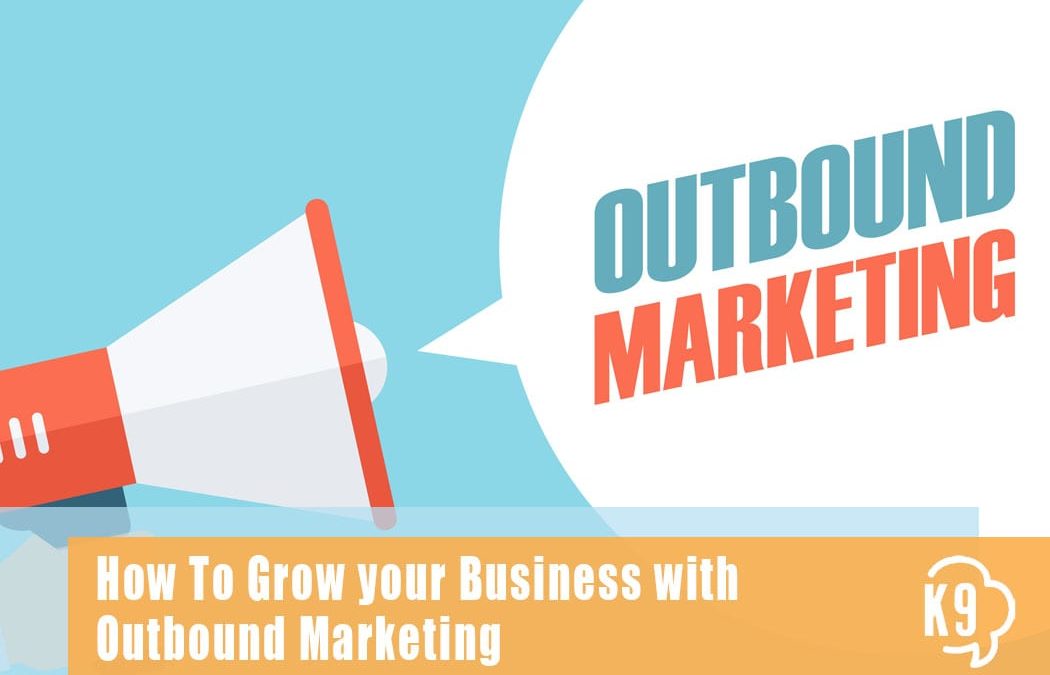Outbound marketing refers to any kind of marketing where a company initiates the conversation and sends its message OUT to an audience. More traditional forms of marketing such as television, radio, billboards, etc. are considered outbound strategies where customers are not necessarily asking for the information you are providing. Not too long ago, this meant that you had zero ad trackability and were dishing out lots of money on advertisements that may or may not reach your target audience. Some may argue that outbound marketing strategies are a waste of budget and that the focus should be on inbound strategies alone. Our success with outbound marketing methods indicate otherwise.
The demand for proof of return on investment has forced new tracking abilities to emerge for outbound methods. Digital outbound methods now provide just as much trackability than inbound methods do and there are some tricks we will share with you for those more traditional forms of marketing (non digital) to help you get a really strong idea of their success.
What are Non Digital Outbound Marketing Strategies?
At Klout9, we like to break Outbound Marketing into two sub categories: digital and non digital. When you think of traditional media, you likely think of TV, Radio, Print and possibly some outdoor advertisements (Billboards). This is what we deem a non digital outbound marketing. While we agree that these methods are not always the best use of your budget due to very high cost per acquisition and a hit or miss target audience, we understand that in certain cases and certain industries, they are still valuable and debatably essential to your overall strategy. If you offer a product or service that appeals to an extremely large audience and is not biased by gender or age, this medium is a great way to get your messaging out to a large group of people at once. For example, if you are a car dealership with a buying program looking to vamp up inventory, you may run a commercial offering a no strings attached “cash for your car” spot. Particularly in an economic downturn where just about everyone can use the extra cash, an ad like this probably would do very well on TV and Radio.
If traditional non digital forms of marketing still play a big part in your marketing strategy, we do encourage you to implement smart tracking methods of measuring their success. Some ideas include:
-Consider a unique incentive meant just for non digital mediums. This eliminates any confusion as to where the lead came from.
-Utilize call tracking numbers
-Find creative ways to combine your outbound and inbound strategies (You can view some ideas on how to accomplish that here).
What are Digital Outbound Marketing strategies?
A digital outbound marketing strategy is where we lay our focus at Klout 9. Refined target audiences are made available within these digital strategies removing the issue of a hit or miss audience. Back to our car dealership example, you can run a social media campaign that specifically targets people who are considered “Auto Intenders” and are actively searching for a vehicle. These digitally outbound methods can be extremely powerful and are a lot more affordable than non digital methods.
Digital methods are much more trackable allowing you to know what is working and what isn’t. Here are some digital outbound strategies with tips on how to achieve trackable success with each.
Email Marketing
If you send out an email blast, every link in that email should be coded with UTM codes so the name of the email campaign shows up within your Google Analytics account. Not only will this confirm how many clicks you got to your site from the email, but every lead or transaction generated after an interaction with your email will show up in your account. If you are an ecommerce store, you can even see the revenue amount generated from each email. UTM tracking codes can be utilized for social ads as well for added tracking not available through Facebook or Instagram.
Social Media Marketing
Social media marketing has been on the uprise for the last few years and will continue to become more prominent and necessary in your overall digital strategies. More than half of the world’s population is on social media and they spend an average of 144 minutes a day on social platforms. Social platforms continue to refine the information they gather from users which allows for much more specific audience targeting tactics for advertisers than ever before. Be sure to create each ad with a specific audience in mind so you are placing your messaging in front of the people most likely to interact and purchase from you. Be sure to also clearly define your goals and build campaigns that compliment them. If your goal is to get more pages likes and build an organic audience, your advertisements should be less “sales pitchy” and more engaging and informational with branded elements.
Display Ads
Display ads on Google or other search engines allow you to show specific or dynamic ad content to users that have certain search habits, interests, occupations, etc. Google display ads allow you to be super specific in your audience targeting and provides a great deal of data to assist in ad optimization. Display ads (including video advertisements) have a much cheaper cost per click than standard PPC campaigns and typically drive a much higher volume of traffic.
These are only a few of the many digital and non digital outbound strategies available today. Outbound marketing strategies are far from obsolete and will continue to adjust with the times. A well balanced marketing strategy that includes both inbound and outbound methods is the key to success. If you have any questions or simply would like assistance brainstorming on ideas, we offer a consultation service and even mentorship programs to guide you through how to effectively plan for and create your marketing strategies! Contact us for your free consultation!

